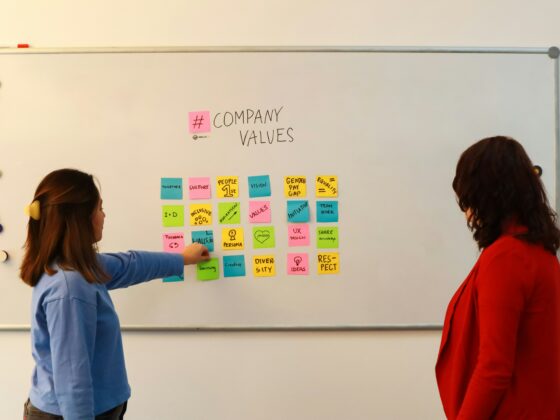
We spoke with Eran Hollander, Chief Product Officer at HungerRush, about how restaurant operators are using tech-first labor tools to streamline operations, optimize staffing, and create better guest experiences. When done right, Hollander explains, technology doesn’t risk alienating guests or staff through a cold, impersonal interface. Instead, it enhances the experience in ways that feel personalized, intuitive, and efficient. And for many younger guests and employees, tech is preferred. For them, smooth digital interactions often are the expected standard of good service. When it’s done right, he says, technology doesn’t feel cold or robotic—it makes things feel more personal.
In this Q&A, he shares what operators should know about data, automation, and how to avoid the most common tech missteps.
With labor costs rising, how are leading restaurant operators using data from integrated POS systems to drive smarter, more predictive staffing strategies—beyond just tracking peak hours?
We’re witnessing a shift from reactive scheduling to more proactive, data-informed strategies. The most forward-thinking operators are diving deep into POS data to identify patterns tied to menu complexity, ordering channels, staff performance and allocation, and even weather.
They’re evaluating which menu items take the longest to prepare, which combos are most costly, and when delivery orders surge. All of that informs smarter labor planning—down to matching the right employees with the right roles, at the right time. For multi-location operators, that means reallocating staff across nearby stores when demand dips in one and spikes in another. That kind of precision turns labor into a strategic advantage in a tight market.
Managers can also adjust staffing based on real-time demand signals, including things like weather or daypart trends, and tailor roles and pay accordingly. The goal is simple: to have the right person, doing the right job, at the right time. When operators leverage this kind of insight, labor stops being just an expense and starts being an investment that drives performance.
As more restaurants adopt AI-powered payroll automation, what strategic considerations should CTOs weigh around system interoperability, data privacy, and long-term scalability?
Interoperability should be the first box to check. New tools must integrate seamlessly into your existing systems—POS, scheduling, inventory, payroll—or you’ll create data silos that slow things down.
Data privacy is equally important. These platforms handle highly sensitive employee and customer data. (Think employee driver’s licenses, social security numbers, etc.) CTOs need to confirm that their tools adhere to encryption standards and access controls.
Scalability is the long game. Whether you’re operating five locations or planning to grow to fifty, your tech stack should support that growth without performance degradation. Choosing flexible systems with cloud-based infrastructure and open APIs is a strong foundation for scaling.
Cross-training is gaining traction as a cost-saving strategy. How can technology meaningfully support workforce agility—without overburdening staff or creating data silos for HR and ops?
The right tech makes cross training a strength, not a stressor. Modern systems should let employees hold multiple roles—like cashier and delivery driver—with pay and permissions tied to the task.
This supports agility and accuracy, but without proper guardrails, it can be misused. A driver shouldn’t be able to void their own orders. That’s a permission that could be used to cover up missed deliveries or skim cash. A manager shouldn’t clock in as a host to avoid overtime.
AI can enhance scheduling by learning each employee’s strengths, preferences, and history. It can recommend roles that fit naturally or rotate employees into ones they haven’t done recently to refresh skills and reduce anxiety.
From an HR and ops perspective, structured tracking is essential. Tools that monitor training progress, track hours by function, and centralize performance data make cross-training work at scale.
For multi-location restaurant groups, what architectural principles or data frameworks are essential when building a tech stack that can adapt to labor volatility and seasonal demands?
Flexibility and consistency are essential. Your platform should support system-wide standards like labor benchmarks and training workflows but also allow for location-specific adjustments. Not every store has the same peak times or labor market and labor laws vary by state, so your system needs to enforce rules like overtime thresholds or break requirements based on location, not just company policy.
You need a shared data model so labor metrics, hours worked, training time, and cost per shift mean the same thing across the board. That’s how you compare regions accurately, identify gaps, and replicate success.
Technology should also help prevent kitchen overloads during seasonal promotions. Smart throttling tools and order pacing features go a long way in syncing labor plans with real-time demand.
How should IT leaders define and track the ROI of labor optimization tools—especially when the outcomes include intangible gains like team morale or guest satisfaction?
There’s the obvious ROI like reduced overtime and faster onboarding, but the real magic is when you see better retention, faster service, and stronger guest reviews.
NPS, average transaction ratings, and delivery times all reflect team and tech performance. When NPS rises with these metrics, it’s a good sign your tools are working in sync.
Even food waste can serve as a proxy for training and morale. When prep is rushed or tickets are misread, waste goes up—often a sign your team is overwhelmed.
Team morale depends on daily experience. Managers often focus on guests but forget that employees need tools that are easy to learn and use. Simplifying the order process can ease the pressure of high-stress interactions with POS systems and guests.
Tracking training time, employee voids, and driver performance offers insight into morale and consistency. Happy, well-supported teams deliver better service—which feeds back into guest satisfaction.
What are the most common pitfalls you’ve seen when restaurants implement labor-focused tech—and what role should the CTO or IT team play in avoiding them?
Shiny-object syndrome can sometimes lead to a misguided purchase. If a solution doesn’t fit your flow, it won’t work, no matter how flashy. Operators sometimes choose labor tools that feel powerful from a management perspective, like scheduling software or driver monitoring systems, but forget to consider how it feels for the people actually using it.
If the tech is clunky, overly complicated, or feels like surveillance, employees won’t engage with it—and in some cases, it can even hurt morale. The best labor tools feel invisible to the team by supporting daily tasks, not interrupting them. A tool that helps a GM optimize scheduling or reassign roles is great; one that flags a driver’s habits without context might just create friction.
That’s where CTOs and IT teams come in. Their job is to vet tools not just for features, but for fit: Does this actually make the shift run smoother? Can it integrate with our current systems? Is it scalable? And critically—does it simplify the process or just add more to it. Even the best tech fails without buy-in. Training and onboarding are crucial. Everyone from hourly staff to regional managers should know how to use the tools—and why it helps them do their jobs better.
Looking ahead, where do you see the biggest opportunities for AI and automation to improve restaurant labor models—without compromising the human element of hospitality?
AI is at its best when it augments—not replaces. We’ll see more systems that proactively suggest staffing changes based on forecasted demand, daypart trends, and local events.
Even small touches matter. Automated guest updates like “We’ve got your order,” and “It’s on the way,” go a long way in customer and labor satisfaction because expectations are set and then met. Automated follow ups that ask for feedback shortly after an order, and AI responses to feedback can integrate marketing options and add professionalism and help foster relationships and build trust.All of this contributes to a smoother, more supportive environment for both guests and team members.
But perhaps the biggest opportunity lies in using AI to better understand and support employees—not just track them. When I look at product strategy, I think about the human needs on the other end, in this case, employees’ needs. Smart labor tools can act like a personal mentor, learning when someone likes to work, what roles they prefer, and how much they want to work. AI can flag when an employee goes above and beyond so managers can recognize them and can suggest retraining when someone struggles in a certain role without judgment. AI done right, is about using data to help people thrive, not just optimize a schedule.
In conclusion, labor-focused tech isn’t just about reducing costs—it’s about making restaurants run better. When used wisely, it helps staff do more with less stress, enhances service, and creates better experiences at every touchpoint. As AI and automation evolve, they’ll give operators new tools to scale smartly without losing the human side of hospitality.
About Eran Hollander
Eran Hollander Chief Product Officer at HungerRush has more than 20 years of experience scaling fast-growth tech companies. As a former psychologist, Eran integrates product strategy that understands the innate human needs of the user to the evolving landscape of restaurant technology.









